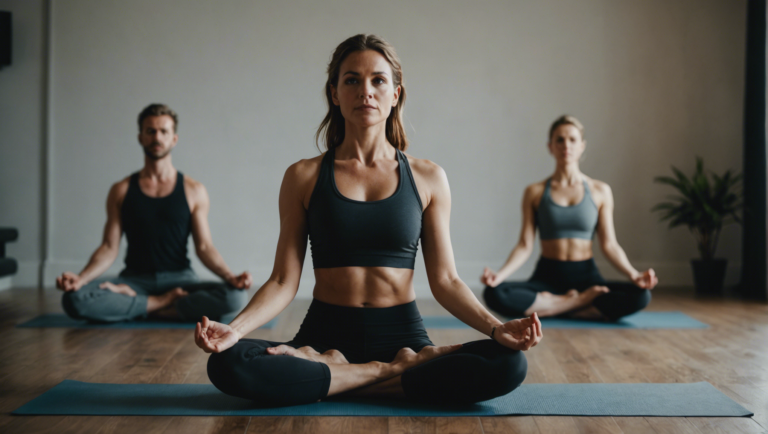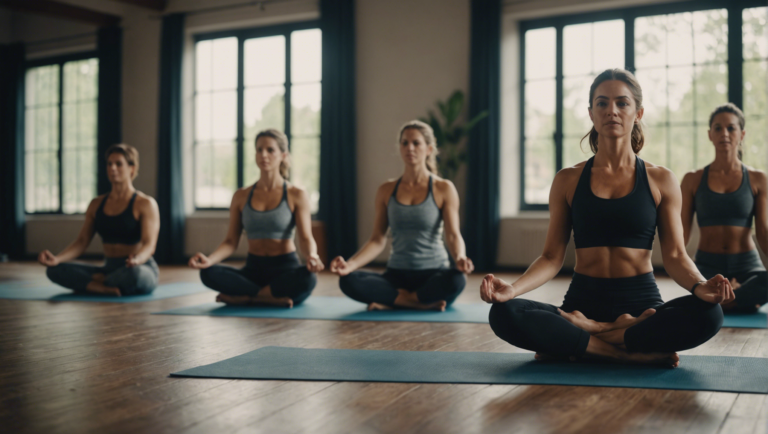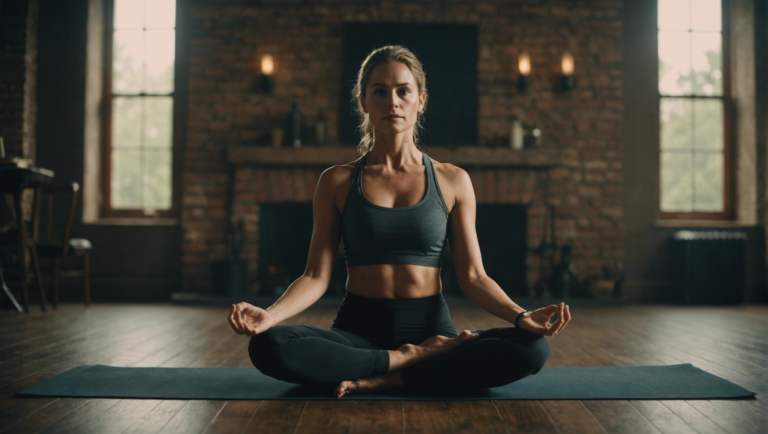Guidelines On Determining The Ideal Length Of A Yoga Strap
Factors to Consider When Selecting the Right Length for a Yoga Strap
Yoga straps are valuable tools that can enhance your yoga practice by helping you improve flexibility, deepen stretches, and maintain proper alignment. One crucial aspect of using a yoga strap effectively is selecting the right length. Choosing the ideal length for your yoga strap can make a significant difference in how beneficial it is for your practice. Here are some essential factors to consider when determining the appropriate length for your yoga strap.
Understanding the Standard Lengths of Yoga Straps
Yoga straps typically come in various standard lengths, with the most common options being 6 feet, 8 feet, and 10 feet. Each length serves different purposes based on your body type, flexibility, and the specific poses you intend to use the strap for. Understanding the standard lengths can help you make an informed decision when selecting a yoga strap.
Body Type and Flexibility
Your body type and level of flexibility play a crucial role in determining the appropriate length of a yoga strap for you. Taller individuals or those with a larger range of motion may benefit from longer yoga straps, such as 8 or 10 feet, to accommodate their needs effectively. In contrast, individuals with smaller frames or limited flexibility may find a 6-foot yoga strap more manageable and comfortable to use.
Intended Use and Poses
Consider the specific poses and exercises you plan to incorporate the yoga strap into when deciding on the length. Longer straps provide more versatility and are suitable for a wide range of poses, including deep stretches and binds. If you primarily intend to use the strap for simple stretches or modifications that don’t require extensive length, a shorter strap may suffice.
Comfort and Ease of Use
The length of the yoga strap should also contribute to your overall comfort and ease of use during practice. A strap that is too short may restrict your movement or limit the range of motion, while a strap that is too long can be cumbersome to adjust and work with. Opt for a length that allows you to comfortably hold the strap with both hands while maintaining proper alignment in various poses.
Personal Preference and Experimentation
Ultimately, the ideal length of a yoga strap is subjective and may vary based on personal preference and comfort. It may be beneficial to experiment with different lengths to determine which one feels the most natural and supportive for your practice. Some practitioners may prefer having straps of different lengths to accommodate various needs and preferences during their practice.
Choosing the right length for your yoga strap is a personalized decision that depends on various factors such as body type, flexibility, intended use, comfort, and personal preference. By considering these factors and experimenting with different lengths, you can find the ideal yoga strap length that enhances your practice and helps you achieve your yoga goals.
Benefits of Using a Yoga Strap in Your Practice
Enhance Your Flexibility and Range of Motion
Using a yoga strap in your practice can significantly enhance your flexibility and range of motion. Whether you are a beginner or a seasoned yogi, a yoga strap allows you to extend your reach and hold poses that may be challenging due to tight muscles or limited flexibility. By using a strap, you can gradually improve your flexibility over time, making those hard-to-reach poses more accessible.
Deepen Your Stretch
Yoga straps are excellent tools for deepening your stretches safely. By using a strap, you can comfortably extend into a stretch without straining your muscles or compromising your alignment. This is especially beneficial for poses that target tight areas such as the hamstrings, shoulders, or hips. The strap provides support and assistance, allowing you to relax into the pose and experience a deeper stretch.
Improve Alignment
Maintaining proper alignment is crucial in yoga to prevent injuries and get the most out of each pose. A yoga strap can help you achieve and maintain correct alignment by providing feedback and support. Whether you are working on aligning your hips in Warrior II or keeping your spine straight in Seated Forward Fold, the strap can assist you in finding the correct alignment for each pose.
Assist in Challenging Poses
Some yoga poses are inherently challenging and may require a little extra help to fully experience their benefits. A yoga strap can act as an extension of your arms, allowing you to bridge the gap between where you are and where you want to be in a pose. Poses like Dancer’s Pose, King Pigeon Pose, or Cow Face Pose can be more accessible with the use of a strap, enabling you to reap the rewards of these advanced poses with support.
Increase Stability and Balance
Yoga straps not only help with flexibility and alignment but also contribute to stability and balance in your practice. By using a strap, you can stabilize your limbs or reach for a binding that might otherwise be out of reach. This added support can give you the confidence to explore challenging balances or transitions, knowing that the strap is there to assist you in finding your equilibrium.
Incorporating a yoga strap into your practice can offer a wide range of benefits, from enhancing flexibility and range of motion to improving alignment and stability. Whether you are a beginner looking to deepen your stretches or an advanced practitioner aiming to perfect challenging poses, a yoga strap can be a valuable tool to support your yoga journey. So, grab your strap, unroll your mat, and experience the transformative effects of using a yoga strap in your practice today.
Different Ways to Utilize a Yoga Strap for Improved Flexibility
Common Mistakes to Avoid When Using a Yoga Strap
How to Properly Care for and Maintain Your Yoga Strap
Maintaining the Longevity of Your Yoga Strap
Importance of Proper Care
Proper care and maintenance of your yoga strap are essential to prolong its lifespan and ensure optimal performance during your yoga sessions. A well-maintained yoga strap not only provides better support and flexibility but also helps prevent injuries resulting from wear and tear. By following simple care guidelines, you can maximize the benefits of your yoga strap and enjoy its full functionality for years to come.
Cleaning Your Yoga Strap
Regular cleaning is crucial to remove dirt, sweat, and bacteria that accumulate on your yoga strap over time. To clean your yoga strap, simply wipe it down with a damp cloth or sponge using a mild detergent or yoga mat cleaner. Avoid using harsh chemicals or abrasive cleaners, as they can damage the strap’s material and affect its texture. After cleaning, allow the strap to air dry completely before storing it.
Storing Your Yoga Strap
Proper storage is key to maintaining the shape and integrity of your yoga strap. Avoid leaving your strap exposed to direct sunlight or extreme temperatures for extended periods, as this can cause the material to degrade. Store your yoga strap in a cool, dry place away from moisture and humidity. To prevent tangling, roll your strap neatly and avoid folding or bending it forcefully.
Checking for Wear and Tear
Regularly inspect your yoga strap for any signs of wear and tear, such as fraying, stretching, or weakening of the material. If you notice any damage, consider replacing the strap to prevent injury during your practice. It’s advisable to replace your yoga strap every year or earlier if you practice frequently or notice significant wear.
Avoiding Misuse
To prolong the life of your yoga strap, avoid using it for activities beyond its intended purpose. While yoga straps are designed to provide support and improve flexibility in yoga poses, using them for excessive weight-bearing exercises or as a substitute for proper equipment can lead to premature wear and damage. By using your yoga strap correctly, you can ensure its longevity and effectiveness in your yoga practice.
Choosing the Right Length
Selecting the ideal length of a yoga strap is crucial for maximizing its benefits. The length of the strap you choose depends on your height, flexibility, and the yoga poses you intend to practice. As a general guideline, a standard 6-foot yoga strap is suitable for most practitioners. However, taller individuals or those needing extra length for specific poses may opt for an 8-foot strap for added versatility.
Proper care and maintenance of your yoga strap are essential for ensuring its longevity and performance. By following these guidelines on cleaning, storing, inspecting for wear and tear, avoiding misuse, and choosing the right length, you can enjoy the benefits of your yoga strap for years to come. Remember that a well-maintained yoga strap not only enhances your yoga practice but also promotes safety and comfort during your sessions.



